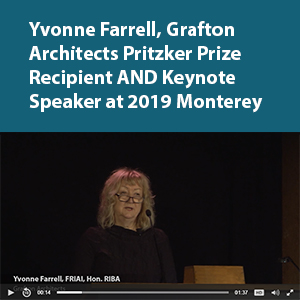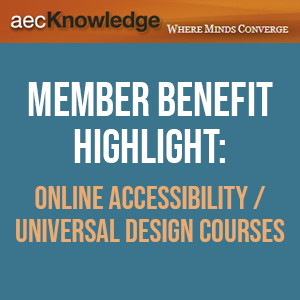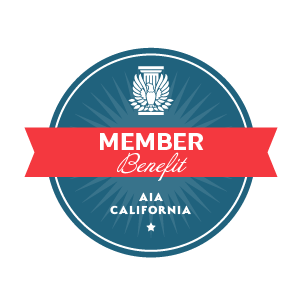
AIA California is proud to announce the launch of our very first Credit Cram! This a free, weeklong education event from November 14th – 17th where AIA CA makes it easy for individuals to earn several hours of continuing education credit and meet some of the California Mandatory Continuing Education requirements.
Credit Cram will offer 3 simultaneous education tracks, and all you have to do is pick your courses! Hear what architects are facing with design regulations through our Codes & Regs Track, learn important tools and insight to help you and your firm thrive in our Practice Track, and get caught up on the newest California Mandatory Continuing Education requirement per AB1010 in our Zero Net Carbon Design Track.
Keep scrolling to check out the course schedule and register below!
Codes & Regs
Just as construction practices have evolved over time, so have the regulations that govern the design, construction, and occupation of the built environment. With few exceptions, these regulations do not become less stringent over time, and many elements that used to be considered best practices are now codified as minimally acceptable construction practices. Within our Codes and Regs Track, you’ll hear about challenges and successes the responsible design professionals face.

Practice
With an important focus on preparing architects to successfully practice into the future, the Practice Track allows architects and industry professionals to pursue educational opportunities related to tips and tools for firms. Hear from industry experts and architectural professionals on how to set up yourself, your team, and/or your firm for progress.
Zero Net Carbon Design
Per the passing of AB1010 in 2021, 5 hours of Zero Net Carbon Design (ZNCD) is the newest education requirement for California architecture license renewal beginning with the 2023 Renewal Cycle. If you're wondering how you can obtain this coursework, look no further! AIA California has made it simple and easy for you to obtain your ZNCD education hours with the ZNCD Track! Join us as we offer all 5 hours of ZNCD coursework you need so you can be one step closer to your licensure renewal.
Register individually for each course that appeals to you to make your ideal schedule.
With three simultaneously occurring tracks: Credit Cram offers the opportunity for attendees to receive up to 5.5 LUs which can include HSW and ZNCD hours!
Monday, 11/14/22 12:00PM PST
Tuesday, 11/15/22 12:00PM PST
Wednesday, 11/16/22 12:00PM PST
Thursday, 11/17/22 12:00PM PST
Codes & Regs
AIA CA Technology Toolkit Tutorial powered by ArchIT and the AIA CA Professional Practice Advisory Committee
1 LU
2022 California Existing Building Code: Prescriptive Method Overview
1 LU/HSW
2021 International Existing Building Code: Work Area Method Overview
1 LU/HSW
Urban Design Townhall: Town and Gown – Vision & Opportunity
1.5 LU/HSW
Practice
Leading Vulnerable and Complex Projects
1 LU
Small Firm Strategies for Growth
1 LU
How to protect your clients and your business from financial instability brought to you by ClientPay
1 LU
Rendering a Reality; VR in Practice
1 LU
zero net carbon design
Building Energy Modeling: Simplify Design Decisions for Achieving Zero Carbon Homes in CA
1 LU/HSW+ZNCD
A Practical Path to Zero-Carbon Buildings: Good Design + Clean Electricity
1 LU/HSW+ZNCD
Low-Carbon Pathway First Steps: Free New Tools for Planning Low-Carbon Buildings (120min)
2 LU/HSW+ZNCD
Architecture at Zero Design Awards: Winning Projects
1 LU/HSW+ZNCD








 AIA California has again joined forces with the local California components to partner with aecKnowledge to provide online continuing education for the design and construction industry. This allows professionals to pursue educational opportunities at their own pace and according to their own schedule. While state regulations require architects to complete CE credits in accessibility, there are other subjects all members of the industry are interested in as well. Choose from a wide range of topics in design, sustainability, accessibility, marketing and business development, practice management, project delivery, and small firm practice – each one professionally developed and delivered by industry leaders. AIA members receive valuable CES learning units, which are automatically reported on your behalf, downloadable resource material and substantial price discounts.
AIA California has again joined forces with the local California components to partner with aecKnowledge to provide online continuing education for the design and construction industry. This allows professionals to pursue educational opportunities at their own pace and according to their own schedule. While state regulations require architects to complete CE credits in accessibility, there are other subjects all members of the industry are interested in as well. Choose from a wide range of topics in design, sustainability, accessibility, marketing and business development, practice management, project delivery, and small firm practice – each one professionally developed and delivered by industry leaders. AIA members receive valuable CES learning units, which are automatically reported on your behalf, downloadable resource material and substantial price discounts. 
 These are the sorts of views and philosophies one is privy to when taking his Accessibility Course offered this year. “
These are the sorts of views and philosophies one is privy to when taking his Accessibility Course offered this year. “
